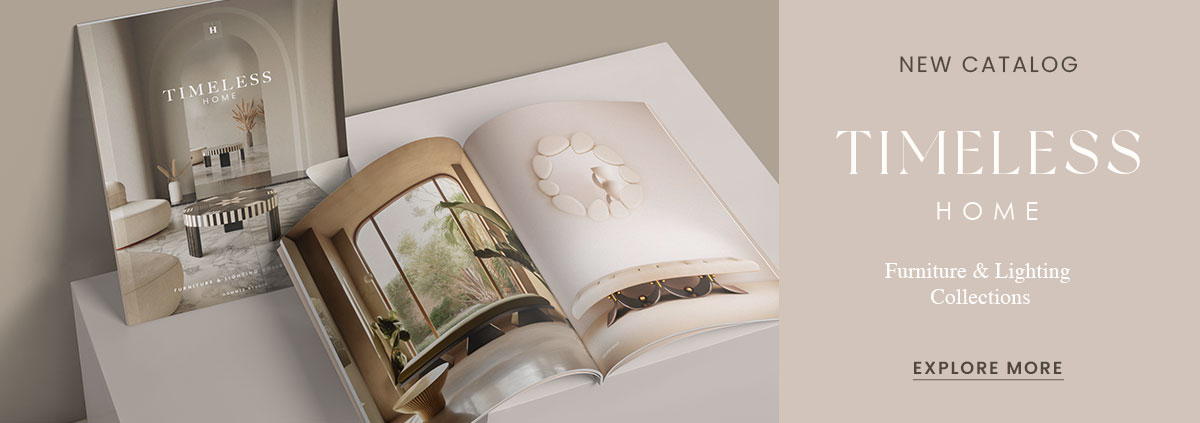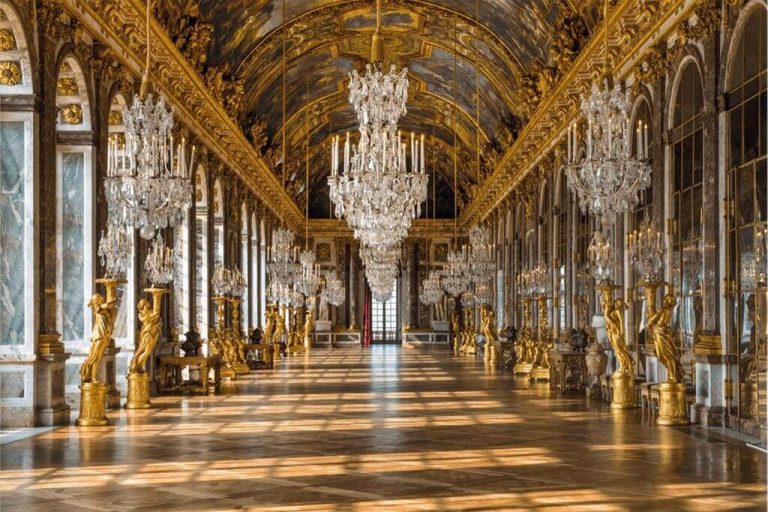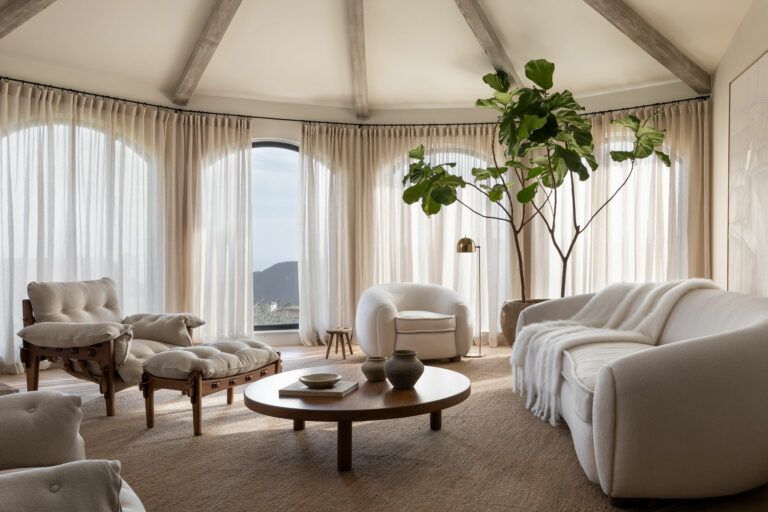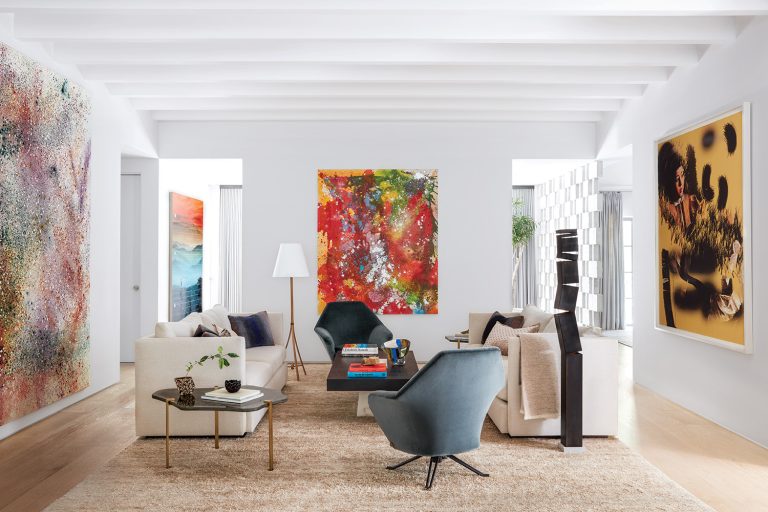Originally designed by the architect that created Buckingham Palace, this Regency era London home balances old architecture with contemporary details

Initially invented by the architect John Nash, who designed Buckingham Palace, this Regency era house was recently renovated internally by the Egyptian designer Marie Soliman and the Swedish interior designer Albin Berglund. Together, after 24 months of work, they created a comfortable and informal space but still maintained its monumentality and balance between the edifice’s 200-year-old architecture and modish features.
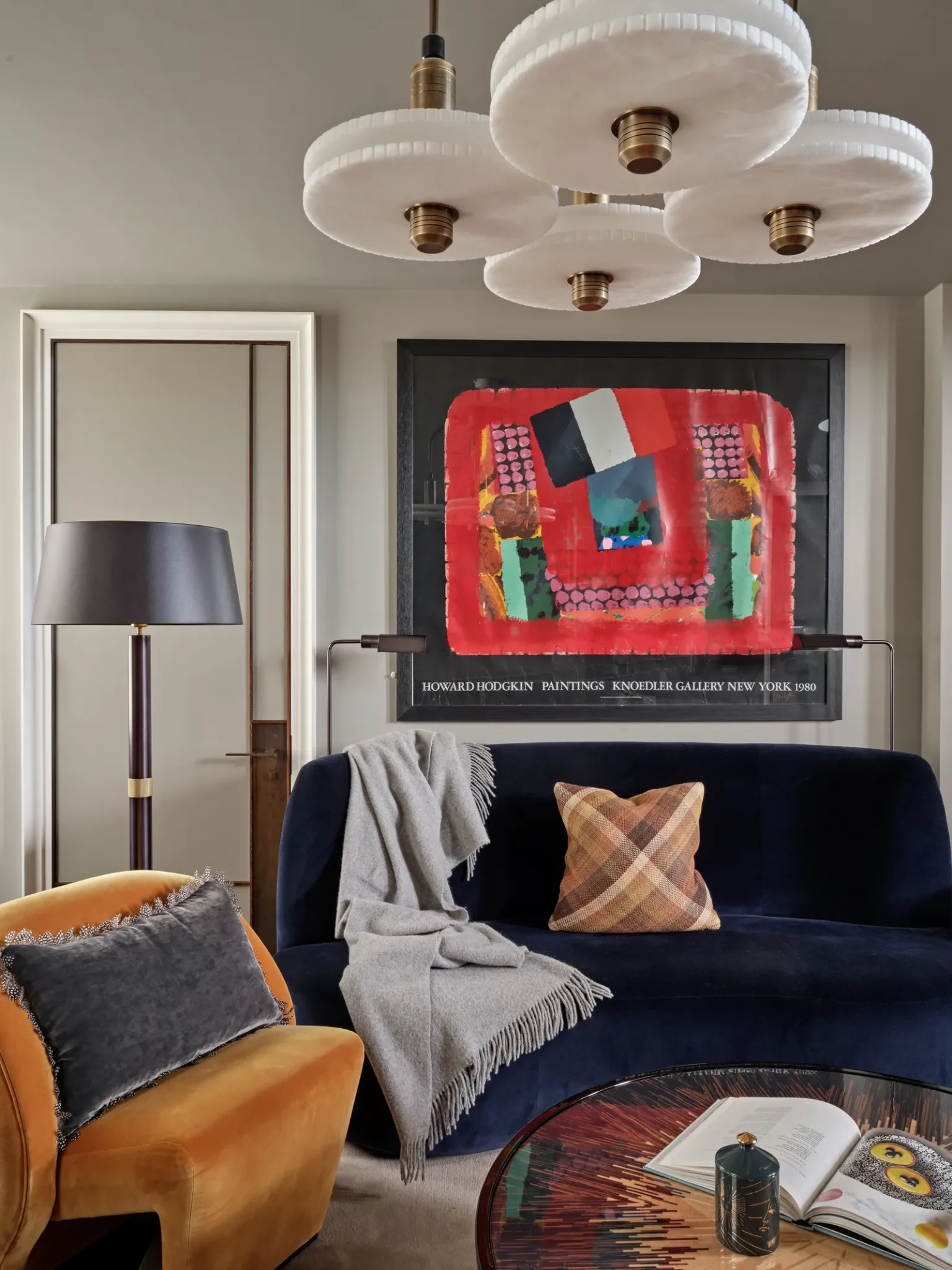
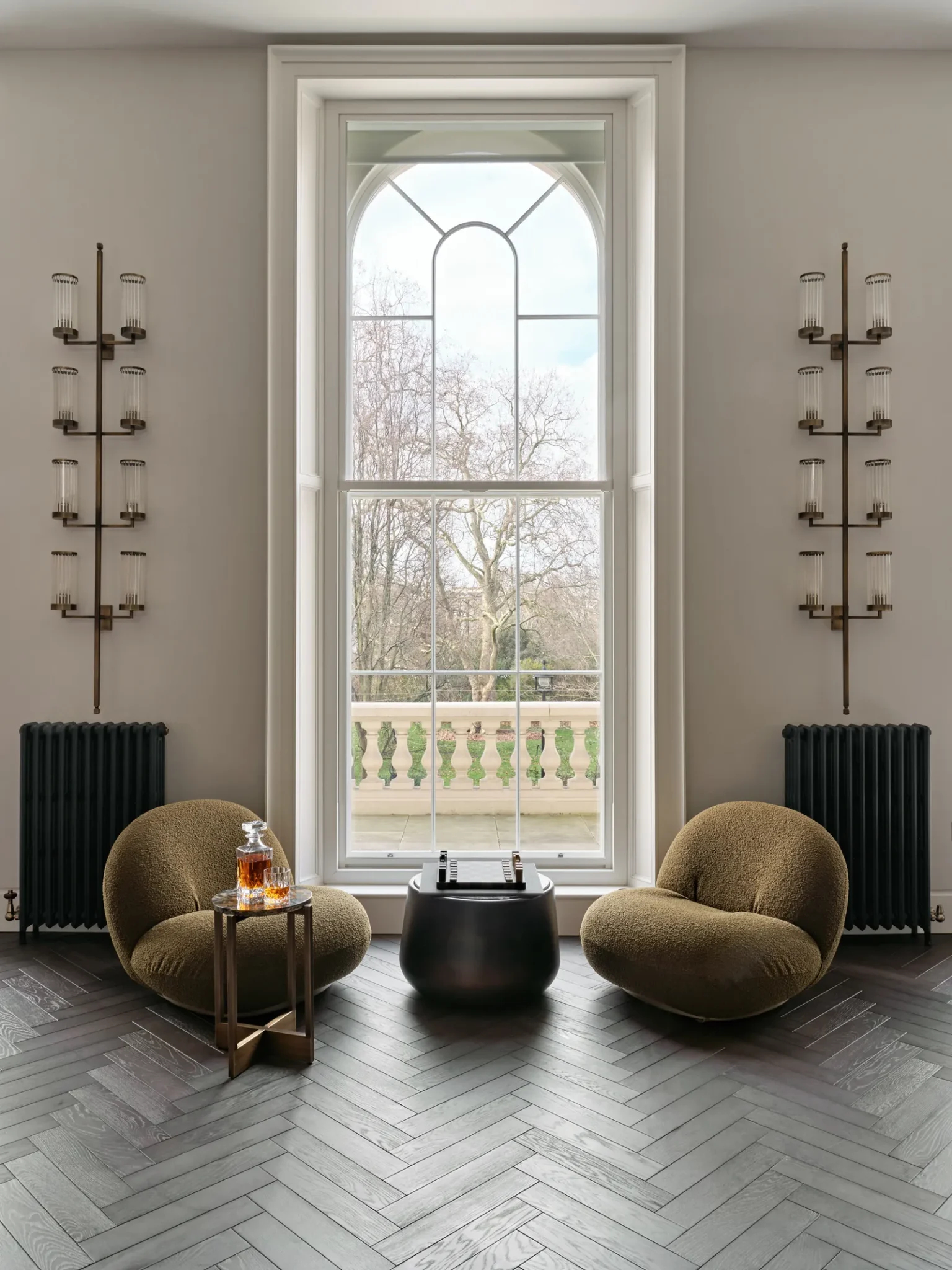
As the space was very ample, the client was concerned that the area wouldn’t be sufficiently familiar. For this reason, the team prioritized spreading warmth to the Regency era house. For instance, they achieved this in the den through soft fabrics and rich colors such as blues, burnt orange, and hints of red.
The fact that this is an ancient building brought more benefits than just the aesthetic outdoor look. It also inspired the interior design. Not only the architecture but also the landscape encouraged, for example, the marble fireplace used in the living room and the herringbone floors and plaster moldings around the house. Some of the signature materials that have been used for a very long time actually exhale the opposite effect of old. They express an elegant, timeless look. Some examples of that classic materials are wood, marble, and brass. They were later applied to a smooth, clever design in this house.
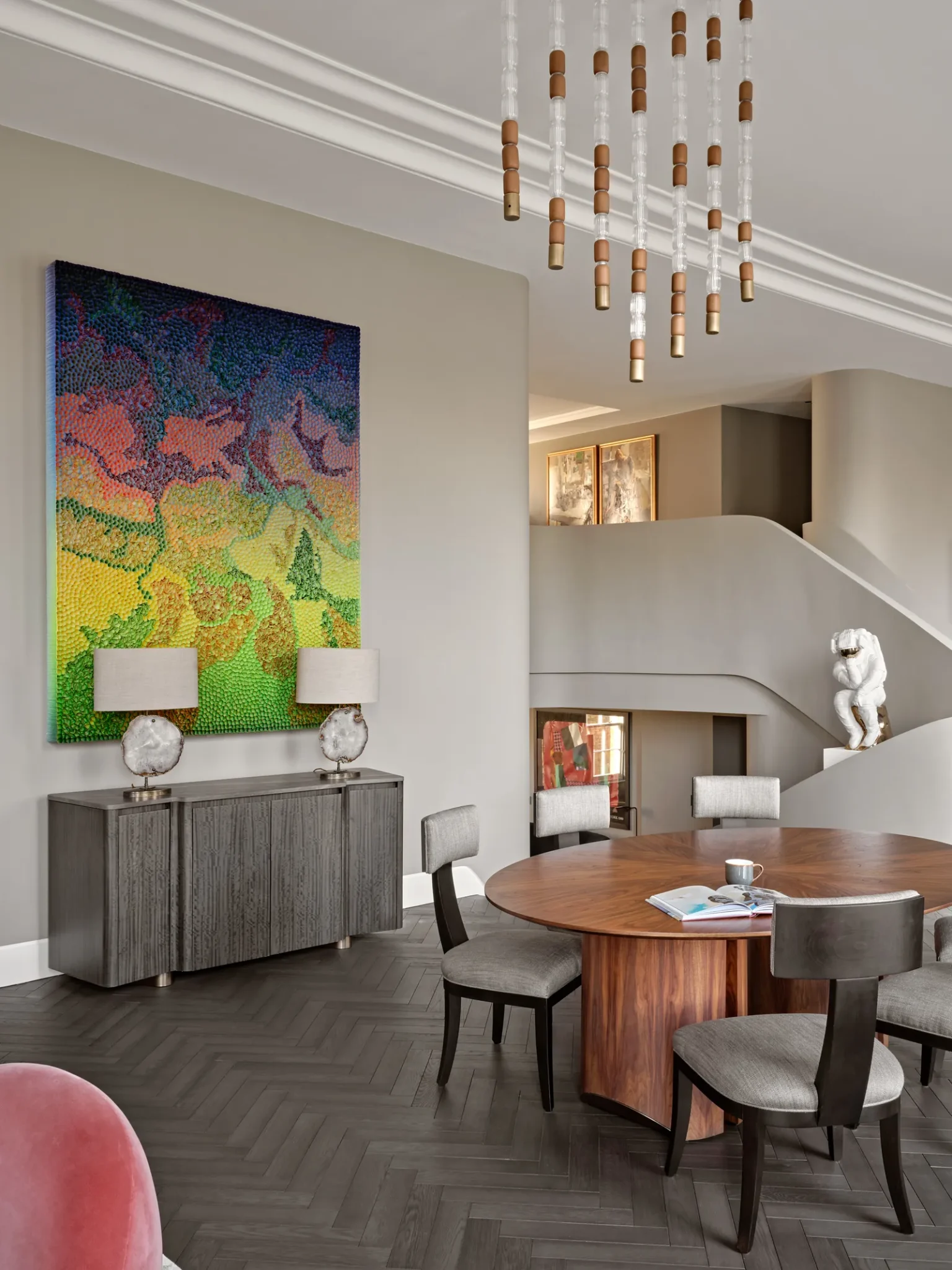
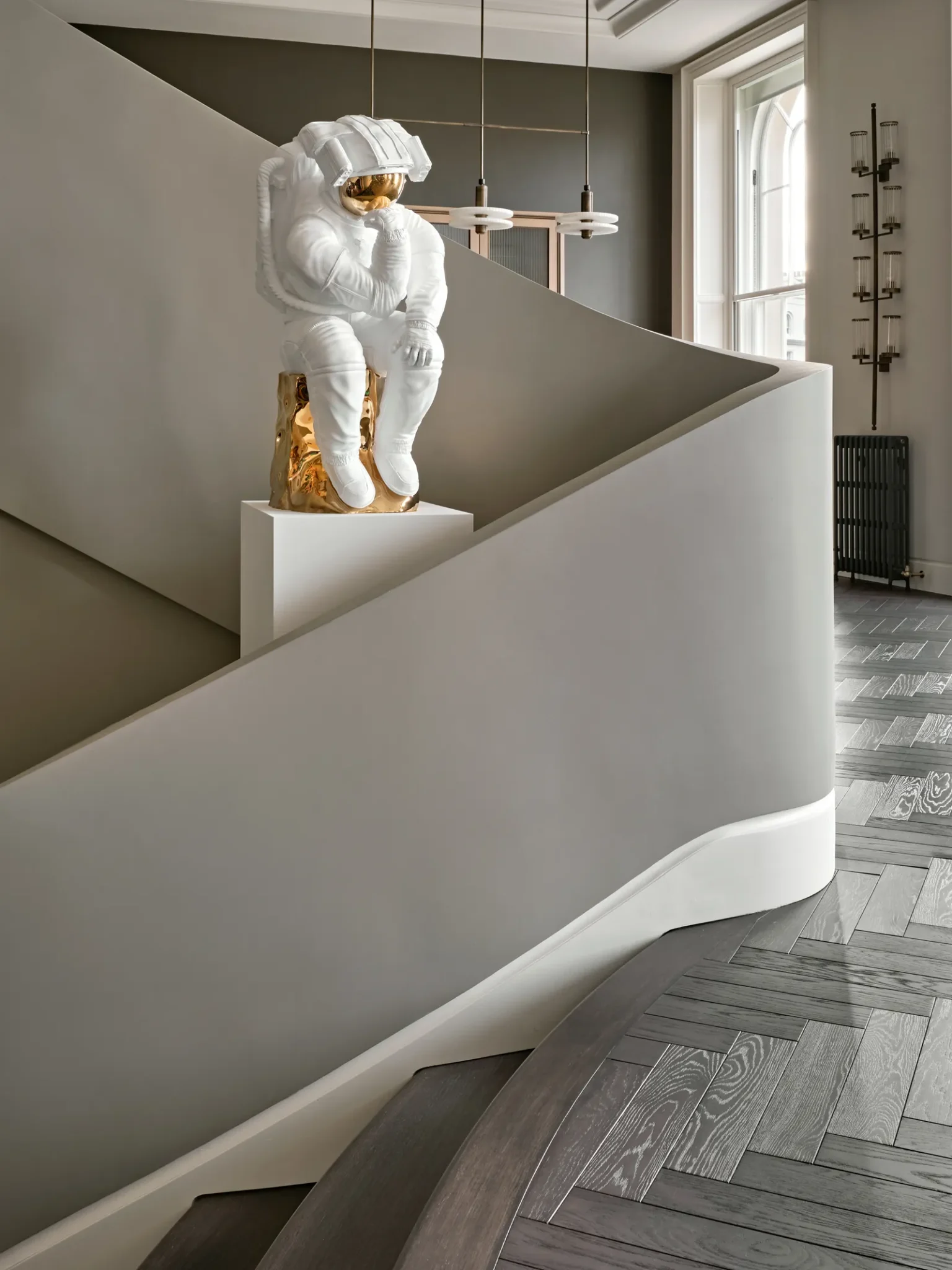
As the clients were an art collector couple, their eclectic collection is highlighted through this Regency era design, yet, never in an over-dramatic way. It’s actually the other way around, as this team’s design connects their admiration for architecture with their client’s pride in their accumulation of art objects. This way, as Soliman and Berglund truly consider incomplete and imperfect things beautiful, they float in harmony with the client’s point of view. Thereby, they can make the house embody effortless elegance.
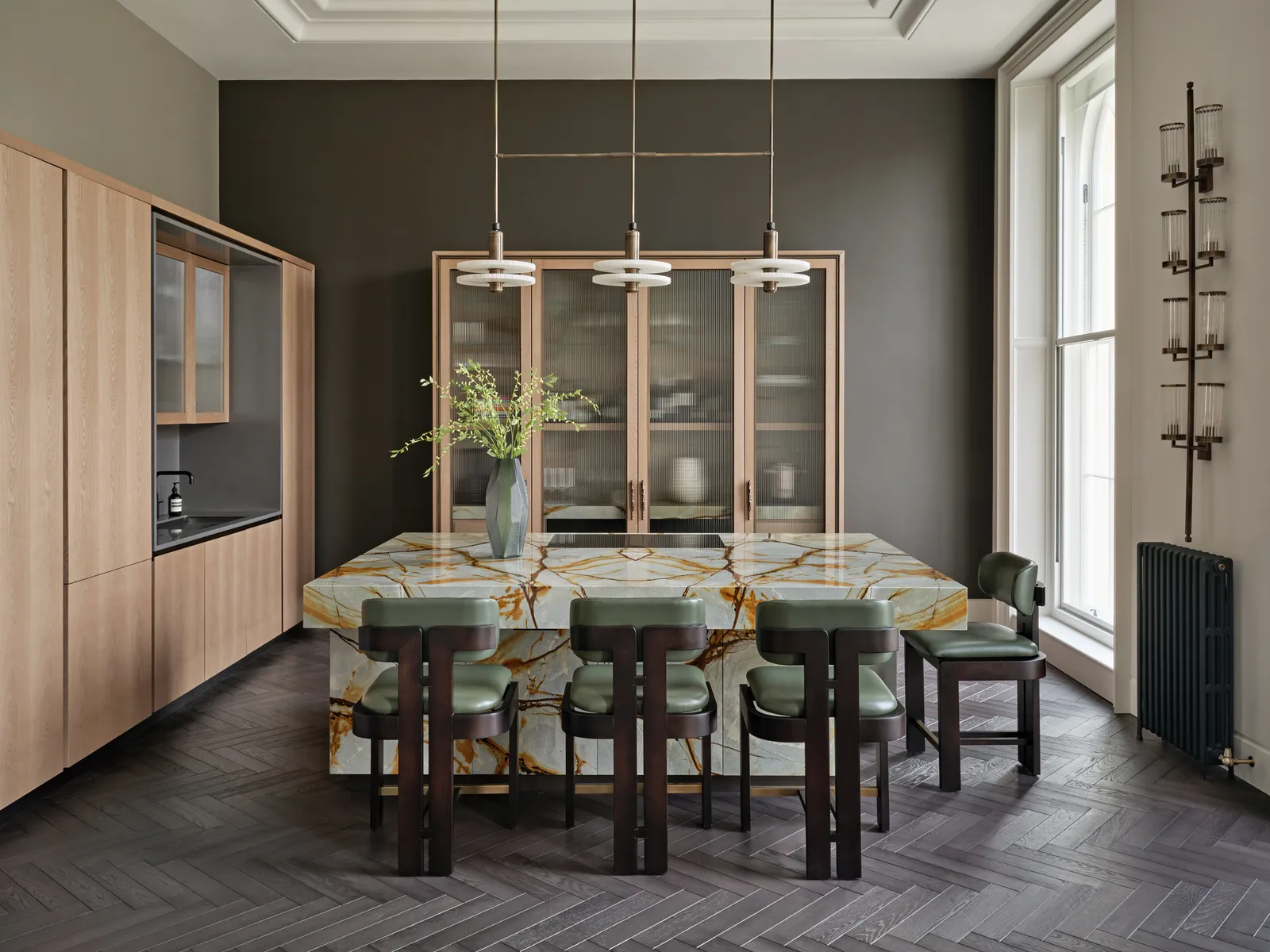
One of the rooms that exhale contemporaneity the most is the kitchen. Even though it has lots of storage, unique colors, and the original architectural structure of the house was untouched, this space, and the rest of the Regency era house, have an impression of openness, just like the designers intended. It is also noticeable that another detail that the interior designers were cautious about was the color. As you have seen, a specific color plays a crucial function in every room. In this case, the color that stands out in the kitchen it’s obviously the eccentric veined green stone.
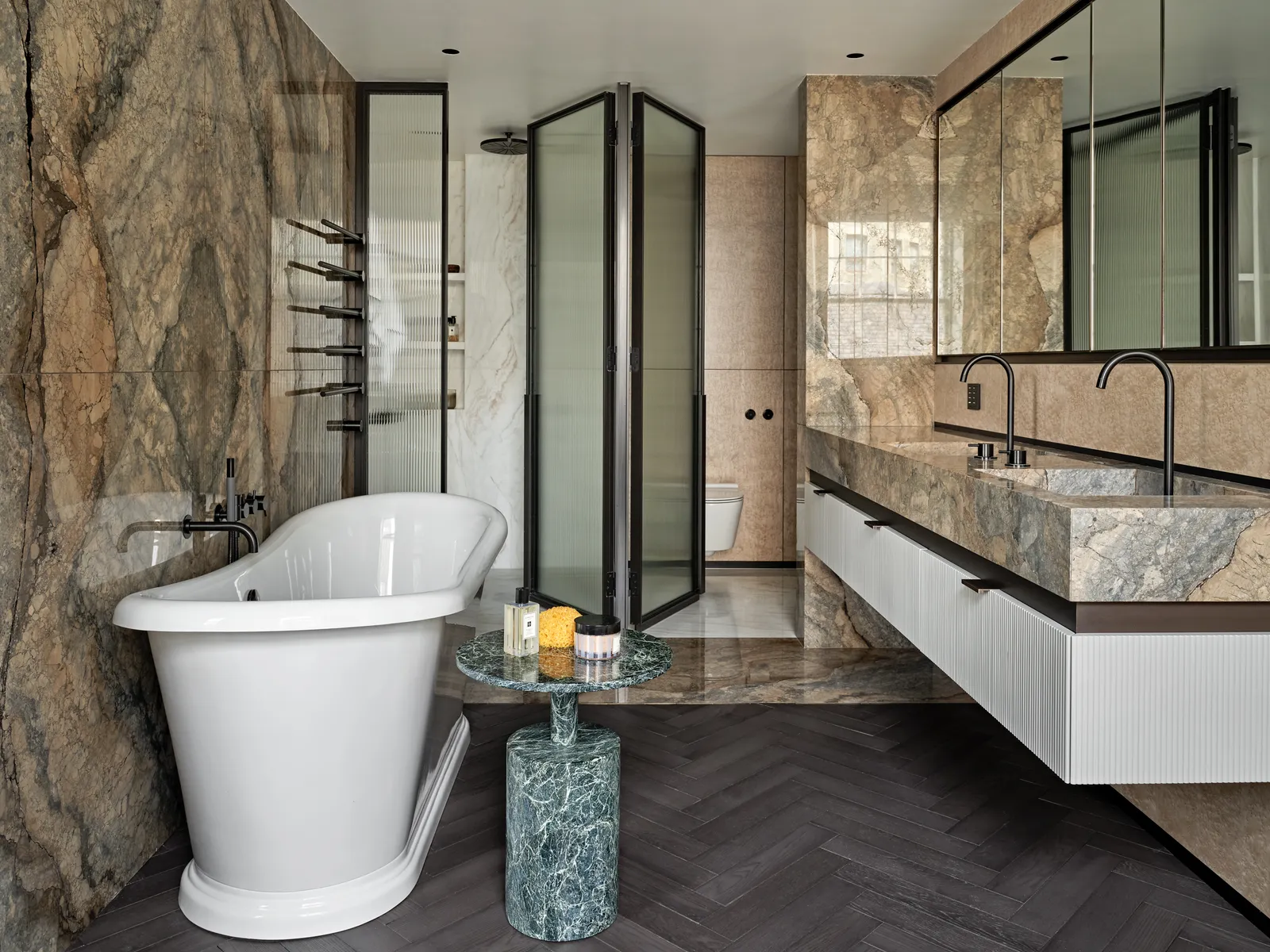
Following the case of the vivid stone in the kitchen, there’s unique colored marble spread across the rest of the house as well. For instance, in the bathroom, the walls, sink, and even a portion of the floor are covered with shiny and elegant three types of stone. They added a beautiful bluish stone table with white details to glimpse color. Another material still present is the herringbone floor, bringing comfort to the space and, somehow, linking this part of the house with all the other areas.
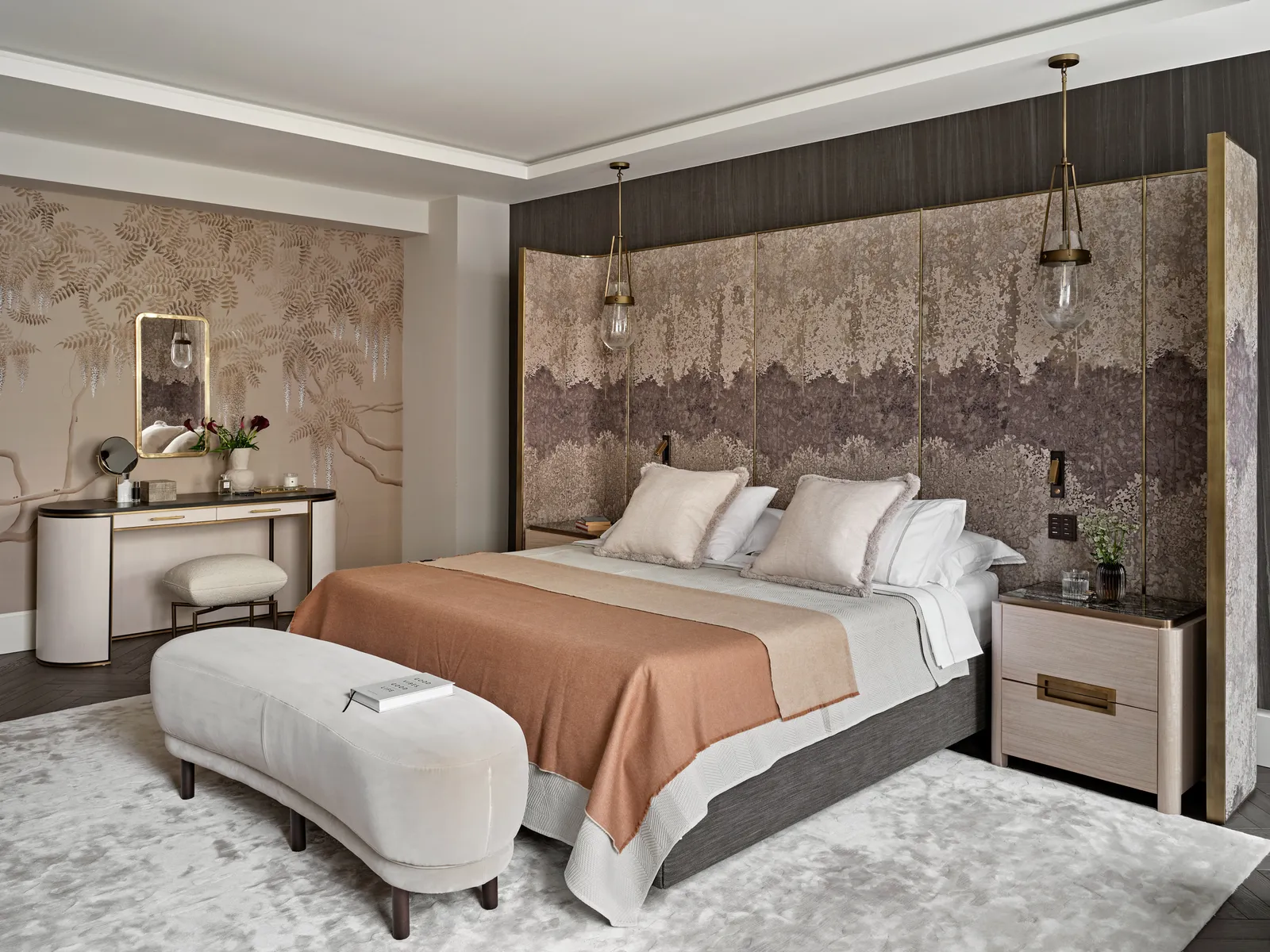
While most of the house has diverse pops of color throughout the Regency era design, the main bedroom is embellished with light apricot linen and a hand-painted silk de Gournay wallpaper. This is the most serene room, but surprisingly, it is extremely elegant. The rich details and the mix of textures and materials give personality and distinction to the bedroom. However, as the color palette is neutral, this space is consumed by calmness.
Now that you have seen this extraordinary Regency era London house, it’s pretty clear that Soliman and Berglund did a splendid job making Nash’s heritage proud. To get even more inspired, check out this contemporary luxury home in Melbourne by Rob Mills.
